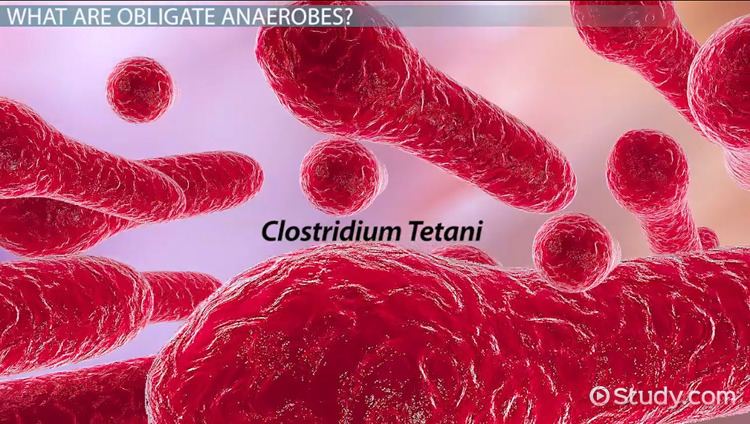 | ||
Representative species Clostridium butyricum, Porphyromonas gingivalis, Fusobacterium necrophorum, Fusobacterium nucleatum, Actinomyces israelii Similar Facultative anaerobic organism, Anaerobic respiration, Obligate aerobe | ||
Obligate anaerobes are microorganisms killed by normal atmospheric concentrations of oxygen (20.95% O2). Oxygen tolerance varies between species, some capable of surviving in up to 8% oxygen, others losing viability unless the oxygen concentration is less than 0.5%. An important distinction needs to be made here between the obligate anaerobes and the microaerophiles. Microaerophiles, like the obligate anaerobes, are damaged by normal atmospheric concentrations of oxygen. However, microaerophiles metabolise energy aerobically, and obligate anaerobes metabolise energy anaerobically. Microaerophiles therefore require oxygen (typically 2–10% O2) for growth. Obligate anaerobes do not.
Contents
Oxygen sensitivity
The oxygen sensitivity of obligate anaerobes has been attributed to a combination of factors:
2) and hydrogen peroxide (H
2O
2) within cells. Aerobic organisms produce superoxide dismutase and catalase to detoxify these products, but obligate anaerobes produce these enzymes in very small quantities, or not at all. (The variability in oxygen tolerance of obligate anaerobes (<0.5 to 8% O2) is thought to reflect the quantity of superoxide dismutase and catalase being produced.)
Energy metabolism
Obligate anaerobes metabolise energy by anaerobic respiration or fermentation. In aerobic respiration, the pyruvate generated from glycolysis is converted to acetyl-CoA. This is then broken down via the TCA cycle and electron transport chain. Anaerobic respiration differs from aerobic respiration in that it uses an electron acceptor other than oxygen in the electron transport chain. Examples of alternative electron acceptors include sulfate, nitrate, iron, manganese, mercury, and carbon monoxide.
Fermentation differs from anaerobic respiration in that the pyruvate generated from glycolysis is broken down without the involvement of an electron transport chain (i.e. there is no oxidative phosphorylation). Numerous fermentation pathways exist e.g. lactic acid fermentation, mixed acid fermentation, 2-3 butanediol fermentation.
The energy yield of anaerobic respiration and fermentation (i.e. the number of ATP molecules generated) is less than in aerobic respiration. This is why facultative anaerobes, which can metabolise energy both aerobically and anaerobically, preferentially metabolise energy aerobically. This is observable when facultative anaerobes are cultured in thioglycollate broth.
Examples
Examples of obligately anaerobic bacterial genera include Actinomyces, Bacteroides, Clostridium, Fusobacterium, Peptostreptococcus, Porphyromonas, Prevotella, Propionibacterium, and Veillonella. Clostridium species are endospore-forming bacteria, and can survive in atmospheric concentrations of oxygen in this dormant form. The remaining bacteria listed do not form endospores.
Examples of obligately anaerobic fungal genera include the rumen fungi Neocallimastix, Piromonas, and Sphaeromonas.
